Rules of the Road
Right of Way Rules
Whenever you meet another boat, it’s like approaching an unmarked intersection in your car. Knowing a few, simple right of way rules will help you avoid a collision. Just as motorists must know what to do when approaching a four way stop, every crossing situation at sea is like approaching an unmarked intersection.
Because there are so many different types of boats and styles of boating, it is important to know what to expect when you come upon another vessel.
"Vessels" are anything that floats on the water that is used, or is capable of being used as a means of transportation on water. A log, a bathtub and many other things could be considered a vessel under the Navigation Rules. The Navigation Rules distinguish one vessel from another by both its design, and by its actions. This section covers maneuvering rules only.
There are other navigation rules that you are required to know. Sound Rules are covered under the Sound Signaling Equipment section. Light Rules are covered under the Navigation Light Equipment section.
The Rules of the Road are published by the U. S. Government Printing Office, and are available in any boating supply stores. Every boat owner should have a copy, but they are mandatory to be kept on vessels over 12 meters (39.4 feet) in length.
The Rules generally used in this course are Inland Rules, unless otherwise noted. There are small but important differences in the Rules depending on where you are operating your boat. It is your responsibility to know the Navigation Rules for your boating area.
- International Rules - Apply to all vessels upon the high seas and in all waters connected to them that are navigable by seagoing vessels.
- Inland Rules - Apply to all vessels upon the inland waters of the United States, and to vessels of the United States on the Canadian waters of the Great Lakes to the extent that there is no conflict with Canadian law. Certain inland waterways may have specific provisions that apply to certain vessels.
- Great Lakes - Includes the Great Lakes and their connecting and tributary waters including the Calumet River as far as the Thomas J. O'Brien Lock and Controlling Works (between mile 326 and 327), the Chicago River as far as the east side of the Ashland Avenue Bridge (between mile 321 and 322), and the Saint Lawrence River as far east as the lower exit of Saint Lambert Lock.
- Western Rivers - Includes the Mississippi River, its tributaries, South Pass, and Southwest Pass, to the navigational demarcation lines dividing the high seas from harbors, rivers, and other inland waters of the United States, and the Port Allen-Morgan City Alternate Route, and that part of the Atchafalaya River above its junction with the Port Allen-Morgan City Alternate Route including the Old River and the Red River.
Vessel Types
- Power Driven Vessel - Any vessel propelled by machinery. This includes any boat that has an engine. Sailboats are considered powerboats when they are being propelled by a motor - even if the sails are up.
- Sailing Vessel - Any vessel under sail alone. Remember, if being propelled by a motor, a sailboat is considered to be a powerboat.
- Vessels Engaged in Fishing - Means any vessel fishing with nets, lines, trawls or other fishing apparatus which restrict maneuverability, but does not include a vessel fishing with trolling lines or other fishing gear which doesn't restrict maneuverability. This means a shrimper out of Galveston is "engaged in fishing" Someone out trolling for stripers in their Grady-White is NOT considered to be engaged in fishing under the Rules.
- Seaplanes - Are any aircraft designed to operate on the water.
- Vessels Constrained by Draft - Means that a vessel can't deviate from a course/channel because they might run aground. A freighter in a narrow channel is an example of this. Note: This is for International waters only, not Inland.
- Vessels Restricted in Their Ability to Maneuver - Means a vessel that can't maneuver as required by the rules because of the size or operation of the vessel. A fishing vessel pulling in nets and a buoy tender placing a buoy are both examples of a vessel restricted in their ability to maneuver.
- Vessels not under Command - Any vessel that for some exceptional circumstance is unable to maneuver as required by the Rules, and is therefore unable to keep out of the way of another vessel. If Joe boater slips and knocks himself out, and can no longer steer--that's a vessel not under command. If the steering cable goes out, and you can't turn the boat, that's a vessel not under command. If the captain is not paying attention and hits another boat, that's negligence.
- Underway - Means that you are not anchored, moored, at the dock, or aground. If you are even drifting along, you are underway.
- Restricted Visibility - Means any condition such as fog, mist, falling snow, rain, or other similar causes that make it difficult to see other vessels. Losing your glasses is NOT restricted visibility.
Rule, Rule, Rule your Boat
It may seem as if you can do anything you want while you are on the water (You might also think that it looks as if everyone else is going crazy on the water). Boating on a crowded waterway can be scary! The good news is that there are rules to govern the action of each vessel. The bad news is that many vessel operators do not know the rules!
Not complying with the Rules - even if you don't know them, can get you in trouble on the water. Even if you think you are following the Rules, if there is something that you can do to avoid a collision - you must do it, even if you deviate from a different Navigation Rule.
It is your responsibility as the ship's captain to be aware of your surroundings at all times, and to operate your vessel in a safe manner. Caution may not be fun, but having an accident sure stinks.
The Rules state that every vessel shall use all available means appropriate to the prevailing conditions to determine if a risk of collision exists. If there is any doubt, such risk shall be deemed to exist.
Rules Explained
The Rules are designed to tell you what to do when you operate your vessel near other vessels. The purpose of the Rules of the Road is to help you avoid an accident--not to establish responsibility or liability if you get into an accident. - Remember, if you get into an accident, you can be held liable, even if you followed the Rules to the letter!
Your primary obligation is to operate in a safe manner. Under the Rules, there is no "right-of-way" like there is on a street. For most situations, Boats are called one of the following.
- Give-Way Vessel - If you are the Give-Way vessel, you must act as if the "stand-on" vessel has the right to keep going the way it is going. It is your responsibility to signal your intentions to the stand-on vessel, and it is your responsibility to maneuver your boat around the other in a safe manner. Also known as a "Burdened" vessel, as it has the burden of.
- Stand-On Vessel - If you are the Stand-On vessel, it is your responsibility to acknowledge the intended actions of the give-way vessel. You must also maintain your current course and speed until the give-way vessel passes, or you enter a dangerous situation.
Operator Responsibilities
In addition to the Rules, you have other responsibilities as the captain as well. You are responsible for the safety of everyone aboard your vessel at all times--and you have a responsibility to those with whom you are sharing the water.
- You must always operate at a safe controlled speed for the situation in which you are boating, and any legally mandated speed requirements that there may be, such as a slow/no wake zone.
- Take care to avoid careless, reckless or negligent boat operations--such as operating too closely to other vessels, boating under the influence, or operating at an unsafe speed for the given conditions.
- Steer clear of naval vessels, and other restricted facilities such as bridges, power plants and dams. New Homeland security measures require it, as does your safety! For more information, see the Homeland Security pages.
Finally, as a boater, you have a responsibility to all other boaters--and all others who enjoy the water--to be courteous and respectful of others. This means that you should always watch your boat noise (a legal requirement) avoid congested waters as much as possible, avoid disturbing wildlife and sea grasses, and look out for the safety and well being of other boaters by giving a hand to those in need.
The Pecking Order
There is a "pecking order" that can be used as a simplified memory aid to determine right of way for vessels of different types. Get very familiar with this list, as it is important to understand it thoroughly. The lower most vessel on the list is the give way vessel, and must stay out of the way of vessels that are higher on the list.
- Overtaken vessel (top priority)
- Vessels not under command
- Vessels restricted in their ability to maneuver
- Vessels constrained by draft
- Fishing vessels engaged in fishing, with gear deployed
- Sailing vessels
- Power driven vessels
Collision Avoidance
- Rules apply to vessels in all conditions of visibility. Rules are the same at night or in fog, for instance, as they are during a bright sunny day.
- Every vessel must maintain a proper look-out by sight and hearing at all times. Operator inattention and not having an adequate look out are a leading cause of accidents each year.
- Every vessel must proceed at a safe speed at all times. Several factors should be considered when determining safe speed, including but not limited to the state of visibility, traffic density, your vessel's maneuverability, with special reference to stopping distance and turning ability. At night, consider the presence of background lights such as those from shore, or from the back-scatter of your vessel's own lights. Consider also the state of wind, sea, and current, and the proximity of navigational hazards.
- The Rules specifically require that any action taken to avoid collision, if the circumstances allow, will be positive, made in ample time, and in keeping with good seamanship. Any changes in course or speed should be large enough to be readily apparent to the other vessel. This means that you should avoid last second changes in course, and you should avoid a small series of changes. Change direction early, and make a large turn.
Maneuvering
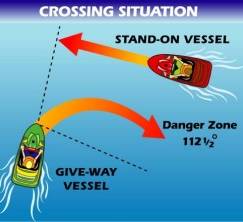
The main situations of collision risk are overtaking, meeting head-on, and crossing. When one of two vessels is to keep out of the way (give-way vessel), the other, the stand-on vessel, must maintain course and speed. The stand-on vessel must take avoiding action when it becomes apparent that the vessel required to give way is not taking appropriate action.
The Crossing Rule
Both International and Inland Rules state that when two power-driven vessels are crossing so as to involve risk of collision, the vessel which has the other on her starboard side (the give-way vessel) must keep out of the way.
As the give-way vessel it is your duty to avoid a collision. Typically, this means you must alter speed or direction to cross behind the other vessel (the stand-on vessel).
At night, if you see a red light crossing right-to-left in front of you, you need to change your course. If you see a green light crossing from left-to-right, you are the stand-on vessel, and should maintain course and speed.
The Meeting Situation
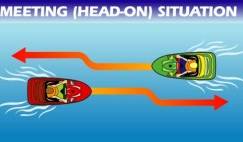
At times there may be some doubt whether the situation is a crossing or a head-on meeting. In case of doubt, you should assume that it is a meeting situation, in which neither vessel has a clear-cut "right-of-way," and each must act to avoid the other. Each vessel in a meeting situation must alter course to starboard so that each will pass on the port side of the other. At night, you will recognize a head-on meeting situation if you see both red and green side lights at the same time.
The Overtaking Situation
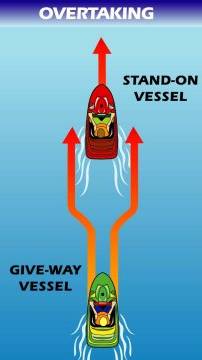
Any vessel overtaking any other vessel must keep out the way of the vessel being overtaken. The former is the give-way vessel and the latter is the stand-on vessel.
This rule applies even if the overtaking vessel is propelled by wind, oars, or rubber band paddlewheel.
A vessel is deemed to be overtaking when coming up with another vessel from a direction more than 22.5 degrees abaft (behind) her beam. This is the angle prescribed by the stern light.
At night, the overtaking vessel will see only the white stern light of the vessel being overtaken. If you see either side light, it is a crossing situation.
Operating in a Narrow Channel
First and foremost, you have to avoid larger vessels that can only travel in a channel. Even if your vessel is operating under the rules otherwise, you must give way to a boat that could potentially run aground or get into a collision if they left the channel.
Try and operate on the edge of the channel. Be extra cautious if you come to a bend in the waterway, and can't see traffic coming towards you.
You may sound a prolonged blast as a warning to traffic headed your way.
On the Great Lakes and Western River system, vessels going downstream are stand-on, vessels going up stream must give-way.
Potential Collision Situation
When the distance between two vessels decreases and the relative angle of the other vessel off the bow remains the same, then you will soon be trying to occupy the same spot in the water - a collision situation. Change course or reduce speed, even if you are the stand-on vessel.
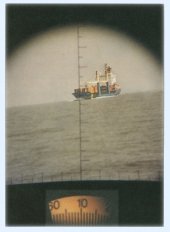
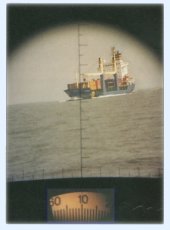
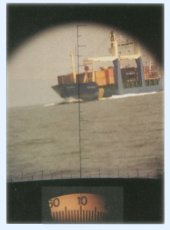
Conduct of Vessels During Periods of Restricted Visibilty
Operating a boat in areas or at times of restricted visibility requires extra concentration by the skipper and the lookout. You must operate your vessel at a speed at which you can identify and react to a situation and still have enough time to avoid a collision. This is especially important when vessels are no in sight of one another.
- Operate at a safe speed for the prevailing circumstances
- Have engines ready for immediate maneuvering - including reverse
- Don't rely on radar or other electronic imaging alone - use your buiilt in senses at all times
- Take avoiding actions early and provide ample time for the other vessels to maneuver
- Avoid sharp turns if being overtaken
- Always - you are in doubt, reduce your speed
- Every vessel shall at all times proceed at a safe speed
Other Rules
Whether under inland or international rules, power vessels must keep clear of sailing vessels in open waters. A sailboat with motor running is defined as a motor boat. The "pecking order" between sailing vessels is more complex. When two sailing are approaching one another so as to involve risk of collision, one of then shall keep out of the way of each other as follows.
- When each has the wind on a different side, the vessel which has the wind on the port side shall keep out of the way of the other.
- When both have the wind on the same side, the vessel which is to windward shall keep out of the way of the vessel which is to leeward.
- If a vessel with the wind on the port side sees a vessel to windward and cannot determine with certainty whether the other vessel has the wind on the port or the starboard side, she shall keep out of the way of the other.
- For the purposes of these rules the windward side shall be deemed to be the side opposite to that on which the mainsail is carried. On square-rigged vessels, it shall be deemed to be the side opposite to that on which the largest fore-and-aft sail is carried.
Practice
Now that you are familiar with "The Rules," go out and use them in passing, meeting, and crossing situations you find on the water. You will get many puzzled looks from inexperienced boaters with no training or testing.
Remember, if a collision does occur, your proper use of the correct signals and appropriate actions will win you points! But you know enough now to avoid a collision.
The navigation rules of the road contained in this course summarize basic navigation rules for which a boat operator is responsible. Additional and more in-depth rules apply regarding various types of waterways and operation in relation to commercial vessels and other watercraft. It is the responsibility of a boat operator to know and follow all the navigation rules.
For a complete listing of the navigation rules, refer to the document “Navigation Rules of the Road” published by the U.S. Coast Guard (COMDTINST 16672.2 Series) and available through the U.S. Government printing office or on the web here.
For state specific navigation requirements, refer to the state laws where you intend to boat.

